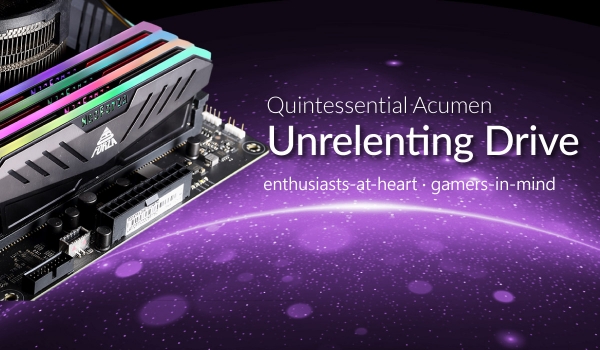




Conclusion : Editor’s Choice to Neo Forza NFP495 4TB Neo Forza is pricing the NFP495 4 TB at a highly impressive MSRP $175. This basically makes the drive the most affordable 4 TB M.2 NVMe SSD on the market. There's a bunch of QLC alternatives around these price points—which are definitely not recommended. Silicon Power XS70 (Phison E18) for $200 could be something worth considering as an alternative, but the E18 controller is much harder to keep cool. The strongest competitors are the various Maxiotech MAP1602 drives, like the Lexar NM790 and Netac NV7000-T that are sold for around $200, offering a little bit better performance at a slightly higher price point. Drives like the WD Black SN850X 4 TB or Samsung 990 Pro 4 TB are way too expensive in comparison, around $290 to $300. If you like to have a ton of storage at a competitive price point, then the Neo Forza NFP495 should definitely be on your shopping list. In all our testing we haven't encountered a single controller crash, data loss, or similar issue.
About NFP495 (TenaFE & YMTC) The Neo Forza NFP495 is the company's new solid-state drive release for H2 2023. It is built on the brand-new TenaFE TC2201 SSD controller. TenaFE, which is headquartered in California and Beijing, was established in 2019 by storage industry veterans to compete with existing players like Phison, Innogrit, SMI and other OEM SSD controller makers. The TenaFE TC2201 is a four-channel controller with support for NVMe 1.4, that's designed for DRAM-less operation, using 64 MB HMB to help provide speedy access to the mapping tables of the SSD. Neo Forza opted for YTMC 232-layer TLC NAND, which is taking the market by storm and has established itself as a viable alternative to offerings from Micron and Kioxia.
NFP495 (TenaFE TC2201) Synthetic Test Results In our synthetic tests the drive does well, but fails to stand out. Random reads are good, reaching performance levels that are close enough to major competitors like the Samsung 980 Pro, WD SN850 and Acer Predator GM7. Random writes on the other hand are very weak, the drive is among the slowest M.2 NVMe drive in this category—definitely something that TenaFE should improve. Random writes are a difficult task for DRAM-less SSDs, because they depend very much on the performance of access to the mapping tables, which keep track of where a certain piece of data is located. Sequential read-write throughputs are much better, reaching 4.5 GB/s. It also has a large SLC cache.
NFP495 (TenaFE TC2201) Real-World Tests Results While synthetic-tests can certainly be useful they only provide a partial picture, hence why real-life performance testing is so important. We tested the drive at 80% full, which puts additional stress on the controller and its algorithms. The NFP495 does very well and is able to compete with drives like Samsung 980 Pro and Acer Predator GM7. There's still several drives that are faster, like the Samsung 990 Pro, the WD Black SN770, Kingston KC3000 (Phison E18) and Solidigm P44 Pro but differences are fairly small though.
NFP495 High CP-Ratio Overall the NFP495 is an excellent SSD especially when considering its highly competitive price point. Compared to other value-oriented drives, the sequential write performance is much better. You get single-threaded writes that reach up to 4.5 GB/s, with a large SLC cache. Filling the whole 4 TB capacity completed at 1.4 GB/s, which is much better than many low-cost alternatives.
NFP 495 Energy-Efficient, Less Heat : Good for Laptops The TC2201 controller is a fairly energy-efficient which doesn't generate a lot of heat. This makes it fairly easy to keep the drive cool, even without a bulky heatsink. We did see a little bit of thermal throttling in our worst-case thermal loading test, but it was well-behaved, still reaching 3 GB/s in that state. Energy efficiency is good, we were able to reach the lowest L1 ASPM power state, which makes the drive fit for use in laptops, where power consumption matters a lot. We measured maximum power draw at around 5 W, which is considerably less than what's consumed by Phison E18, for example.
Improvement Suggestion to TenaFE We specifically benchmarked Random Reads over various test area sizes, a test that's designed to determine how well the controller handles DRAM-less operation. Remember, TenaFE advertises "optimized for DRAM-less." While the results with a small test area sizes are "good," IOPS drop rapidly for random writes spread over an area between 8 GB and 40 GB, where the drive is weaker than most alternatives—we’re not impressed. While most consumer workloads are localized to a small area, there's some that touch a larger working set, which means lower performance in those specific cases. For larger work areas over 50 GB, the controller does catch up, but we'd rather have better performance with smaller test sizes. Random writes are very weak, the drive is among the slowest M.2 NVMe drive in this category—definitely something that TenaFE should improve.
Original full detailed review : https://www.techpowerup.com/review/neo-forza-nfp495-4-tb/
%202.png)
%203.png)

